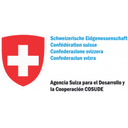Executive Secretary

10th International Scientific Conference on Agricultural Development and SustainabilityAGROCENTRO 2023
Agrocentro 2021
Abstract
Yam tubers (Dioscorea spp.) are an excellent source of carbohydrates and contain vitamins such as thiamine, riboflavin, niacin, ascorbic acid, and carotenes. In addition, they have a large part of the essential amino acids and minerals necessary in the human diet (USDA NAL, 2017). The municipality of Camajuaní is the one with the largest planted area in the central region (it exceeds 170 ha per year) and is among the top three in the country (MINAG, 2012). Among the major limitations faced by the production of Dioscorea spp. Globally, there are the effects caused by viral diseases that affect the producing areas (Odu et al., 2011) where potyviruses have the greatest economic impact (Eni et al., 2010a; Nkere et al., 2018) . This research reports for the first time the presence in Cuba of the species Yam mosaic virus (YMV) and Yam mild mosaic virus (YMMV) belonging to the genus Potyvirus, family Potyviridae, with an incidence of these diseases that was higher than 64% in areas of production of the Camajuani municipality. The existence of resistant, tolerant and susceptible cultivars to these diseases was determined. 10 species of weeds associated with the cultivation of Dioscorea spp. as alternative hosts for potyvirus. In addition, in this cultivar it was possible to obtain propagation material free of potyvirus by harvesting the tubers with the green foliage and their longitudinal fractionation. This moment of harvest of the bulbilos in the cultivar 'Belep' (D. alata) allowed to obtain more than 50% of seedlings free of potyvirus. With the use of these planting materials of both tolerant cultivars, protected from infection in the field by a plant barrier of the cultivar 'Burro CEMSA' (Musa ABB), it was possible to reduce losses caused by diseases associated with potyvirus among 50-57%. The results obtained allow to contribute to the management of diseases associated with potyvirus in commercial cultivars of Dioscorea spp. in Cuba.
Resumen
Los tubérculos del ñame (Dioscorea spp.) son una excelente fuente de carbohidratos y contienen vitaminas como la tiamina, riboflavina, niacina, ácido ascórbico y carotenos. Además, poseen gran parte de los aminoácidos esenciales y minerales necesarios en la dieta humana (USDA NAL, 2017). El municipio de Camajuaní es el de mayor área plantada en la región central (sobrepasa las 170 ha anuales) y está entre los tres primeros del país (MINAG, 2012). Entre las mayores limitantes que enfrenta la producción de Dioscorea spp. a nivel global están las afectaciones causadas por las enfermedades virales que inciden en las zonas productoras (Odu et al., 2011) donde, los potyvirus son los de mayor impacto económico (Eni et al., 2010a; Nkere et al., 2018). Esta investigación informa por primera vez la presencia en Cuba de las especies Yam mosaic virus (YMV) y Yam mild mosaic virus (YMMV) pertencientes al género Potyvirus, familia Potyviridae con una incidencia de estas enfermedades fue superior al 64% en áreas de producción del municipio Camajuani. Se determinó la existencia de cultivares resistentes, tolerantes y susceptibles a estas enfermedades. Se informaron 10 especies de arvenses asociadas al cultivo de Dioscorea spp. como hospedantes alternativos de potyvirus.. Además, en este cultivar se logró la obtención de material de propagación libre de potyvirus mediante la cosecha de los tubérculos con el follaje verde y su fraccionamiento longitudinal. Este momento de cosecha de los bulbilos en el cultivar ‘Belep’ (D. alata) permitió obtener más de un 50% de plántulas libre de potyvirus. Con el empleo de estos materiales de plantación de ambos cultivares tolerantes, protegidos de la infección en campo por una barrera de plantas del cultivar ‘Burro CEMSA’ (Musa ABB), se logró la reducción de las pérdidas provocadas por las enfermedades asociadas a potyvirus entre 50-57%. Los resultados obtenidos permiten contribuir al manejo de enfermedades asociadas a potyvirus en cultivares comerciales de Dioscorea spp. en Cuba.
About The Speaker

Dr. José Efraín González Ramírez


